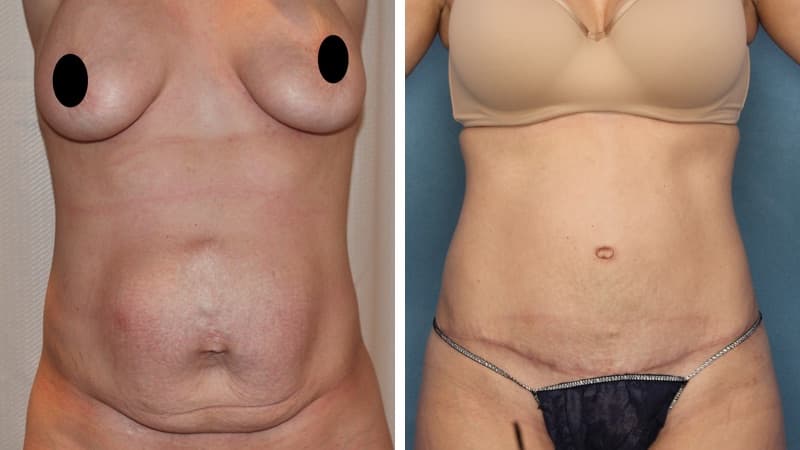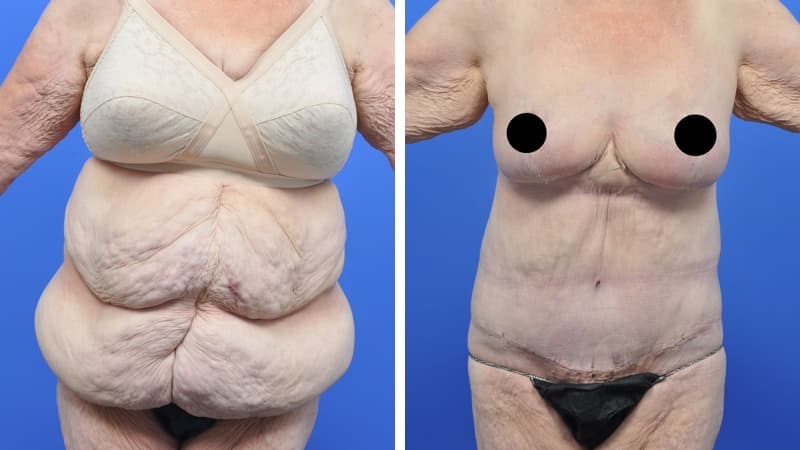The basics
Liposuction (sometimes called liposculpture) and body contouring procedures are amongst the most common plastic surgery operations in Australia. There have been many media articles about these procedures, and there is a great deal of misinformation.
Liposuction was first developed in France in the 1980s. Since then it has become a phenomenon, with all sorts of claims made about what can be achieved. Many techniques have been described, and much has been written about their advantages and disadvantages.
What can I expect to achieve?
Liposuction is the removal of fat from underneath the skin through a thin metal tube. The tube is introduced under the skin through small incisions, usually about 5mm in length.
All the many different types of liposuction are simply variations on this theme. The fat may be removed by suction applied to the tube, or can be liquefied by ultrasonic wave energy converted to heat before it is sucked out.
Liposuction can be performed in tumescent or super wet environments where large amounts of dilute fluid with local anaesthetic and adrenaline are infiltrated first.
All liposuction creates a tissue injury and causes some fluid loss, and requires the treated area to be compressed by an elastic garment to prevent blood or fluid accumulating at the site.
Liposuction is an excellent treatment for removing fat deposits which diet and a healthy lifestyle won’t shift. It is best defined as a re-contouring or refining procedure, as opposed to a way of getting thinner.
In liposuction, all techniques work well. It is the experience and skill of the surgeon that makes the difference. The method chosen should be the surgeon’s preference, as the accuracy of fat removal is really the key to a result that’s as smooth as possible.
Once the fat is removed, the degree of skin contraction in the area is critical. The tighter the skin, the smoother the result, and the less likelihood of irregularity. Loose overlying skin is the major cause of poor results.
Liposuction does not remove any skin, tighten the overlying skin, or correct cellulite. If the overlying skin is firm, it will remain firm.
If the overlying skin is loose, it may become looser. While this may be an acceptable trade-off for some, it won’t be for others, so the possibility must be discussed. If the skin is likely to loosen or sag unacceptably, a skin-removal body contouring procedure may be preferable.
Liposuction is not a method of weight loss, nor will it prevent future weight gain. Though it permanently removes fat cells, there are always plenty left! Weight loss, sensible diet and taking responsibility for your health and lifestyle are essential to a successful long- term outcome after liposuction.
What happens before surgery?
You may be fitted for and provided with an elastic pressure garment preoperatively. It is put on at the end of the surgery and you will need to wear it for two to four weeks.
You should not take medication containing aspirin for 10 days before surgery.
What happens during surgery?
For liposuction we usually use a general anaesthetic, however, in some cases it is appropriate to use heavy sedation and local anaesthesia. Either way, there is no pain during the procedure and little or no recall.
We use the tumescent liposuction technique, and range between fine cannula syringe liposuction techniques to power assisted (PAL) techniques according to the surgical plan.
Dressings and pressure garments are applied before waking.
What happens after surgery?
Medication is given to limit any pain and nausea.
These procedures cause a bruising type of discomfort, which makes you feel stiff and sore. This is easily controlled with oral pain medication. We encourage you to move around and drink plenty of fluids.
For the first two days, there may be bloodstained ooze from the liposuction puncture wounds leaking through the pressure garment. This is nothing to worry about as it limits bruising and swelling. An effective strategy is to place disposable nappies over the oozing spots, keeping them in place with a pair of panty hose or bike shorts worn over the top. The nappies should be changed frequently until the oozing stops.
Drinking enough fluids is vital.
You must wear the pressure garment for a few weeks, and cannot shower for the first two days, just leave the garment on. After this, you can take it off for showering, then replace it immediately.
After the first review in the office, around three to seven days after the operation, the pressure garment can be removed and washed in the washing machine. You can then keep removing the garment daily for showering. It is usually worn for two to four weeks under normal clothes.
The treated area normally becomes swollen and bruised. Though the bruising gradually fades, it can take weeks to months for all the swelling to resolve. When the garment is removed you will see changes to the area immediately, but your new shape will take some time to be fully revealed. Postoperative massage helps to promote smoothness and reduce swelling.
It is best to take at least one week off work after liposuction. Driving can be resumed as soon as you are comfortable and off strong pain medication, which usually takes several days. You should avoid heavy exercise for at least three weeks after surgery.
Possible complications
The most common complication of liposuction is irregularity of the skin, though it is generally minor and does not detract from the overall contour improvement. Occasionally a small touch up operation is necessary to smooth out a small hollow or bulge. This can usually be carried out under local anaesthetic as a walk-in walk- out procedure.
We do not undertake massive (greater than five litre) liposuction. Excessive fluid loss makes it dangerous to remove this amount of fat at one time.
Before you commit to having this surgery it is important that you read the document “Consequences, Risks and Complications of Liposuction“ which we will provide for you.














